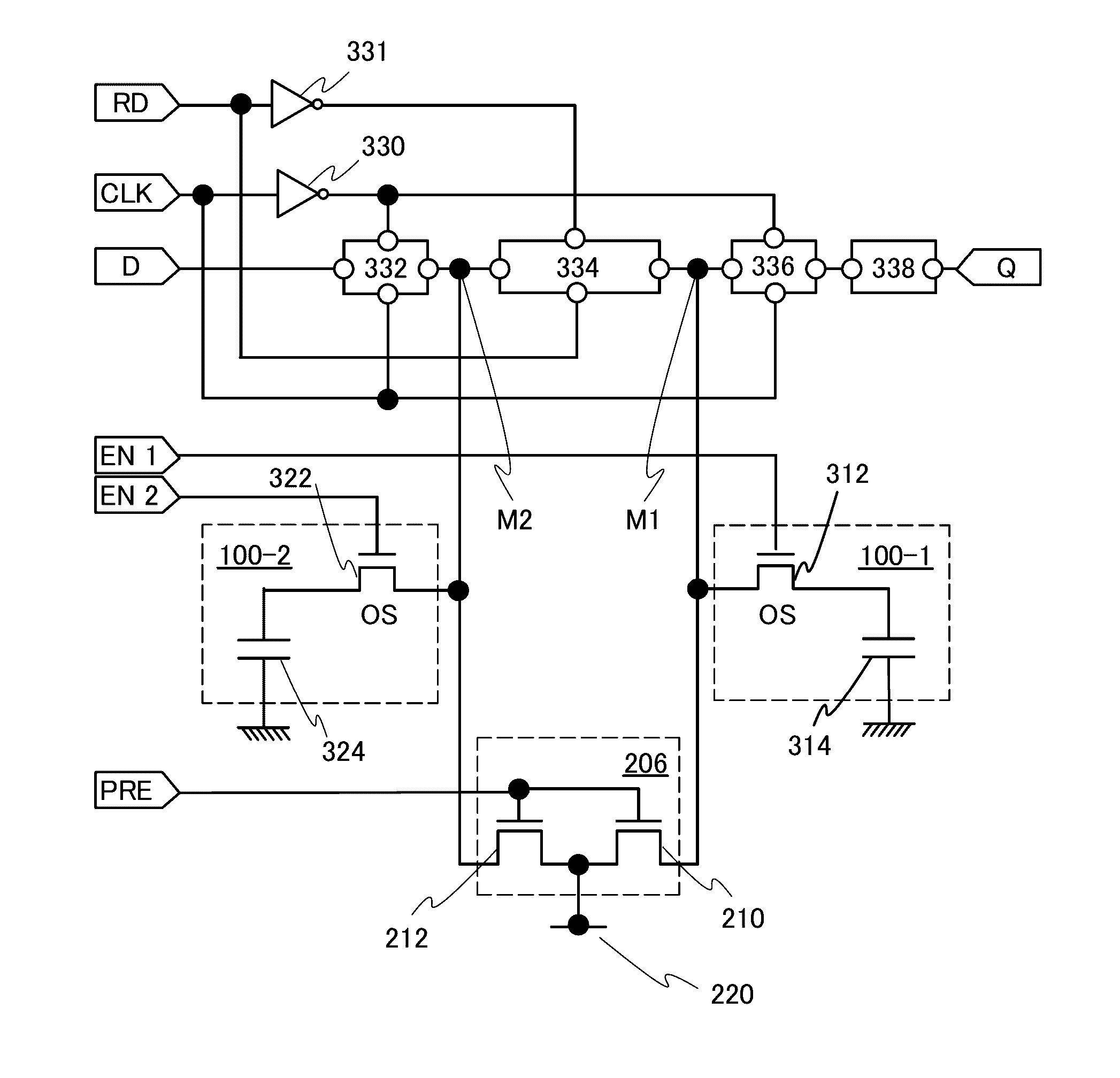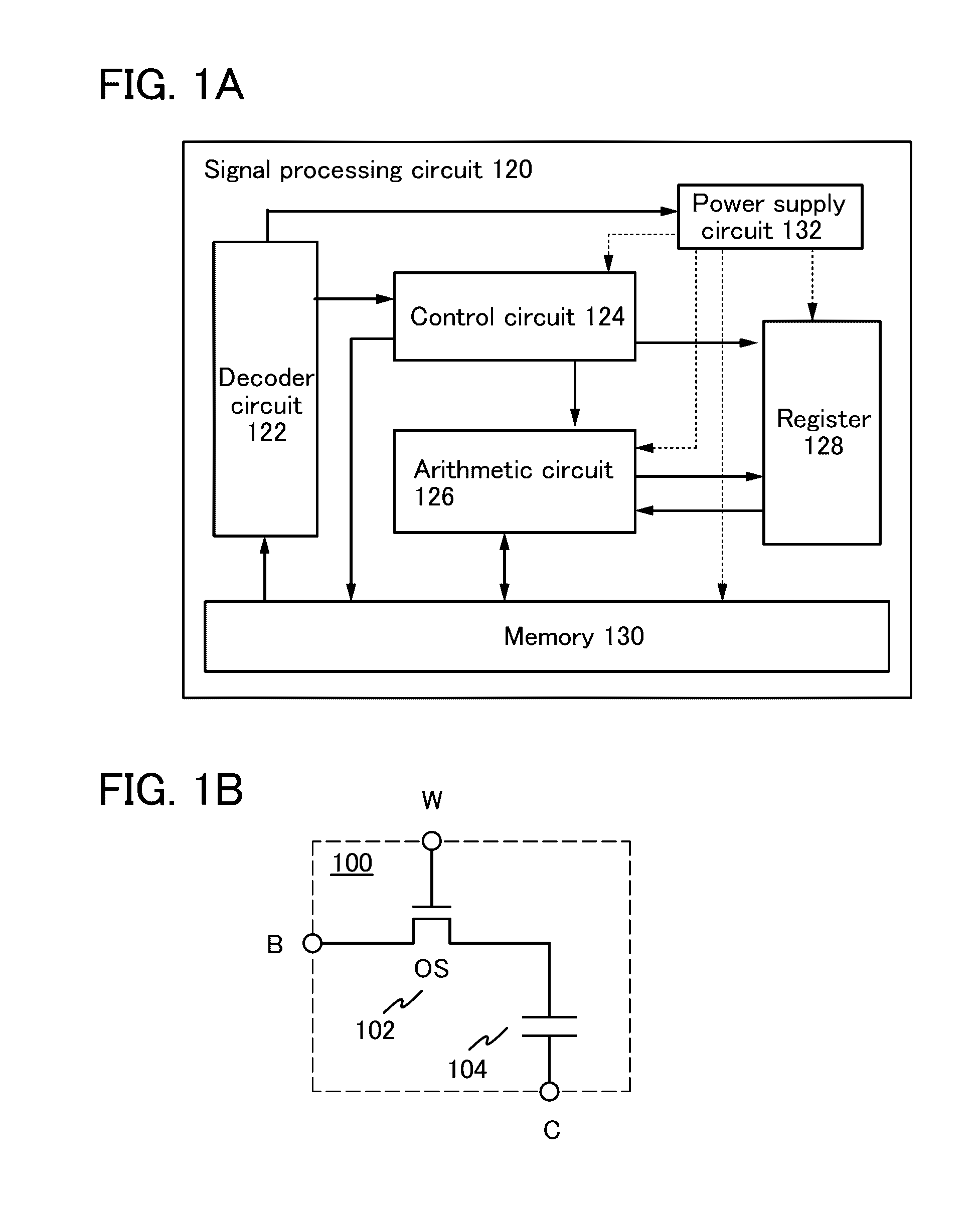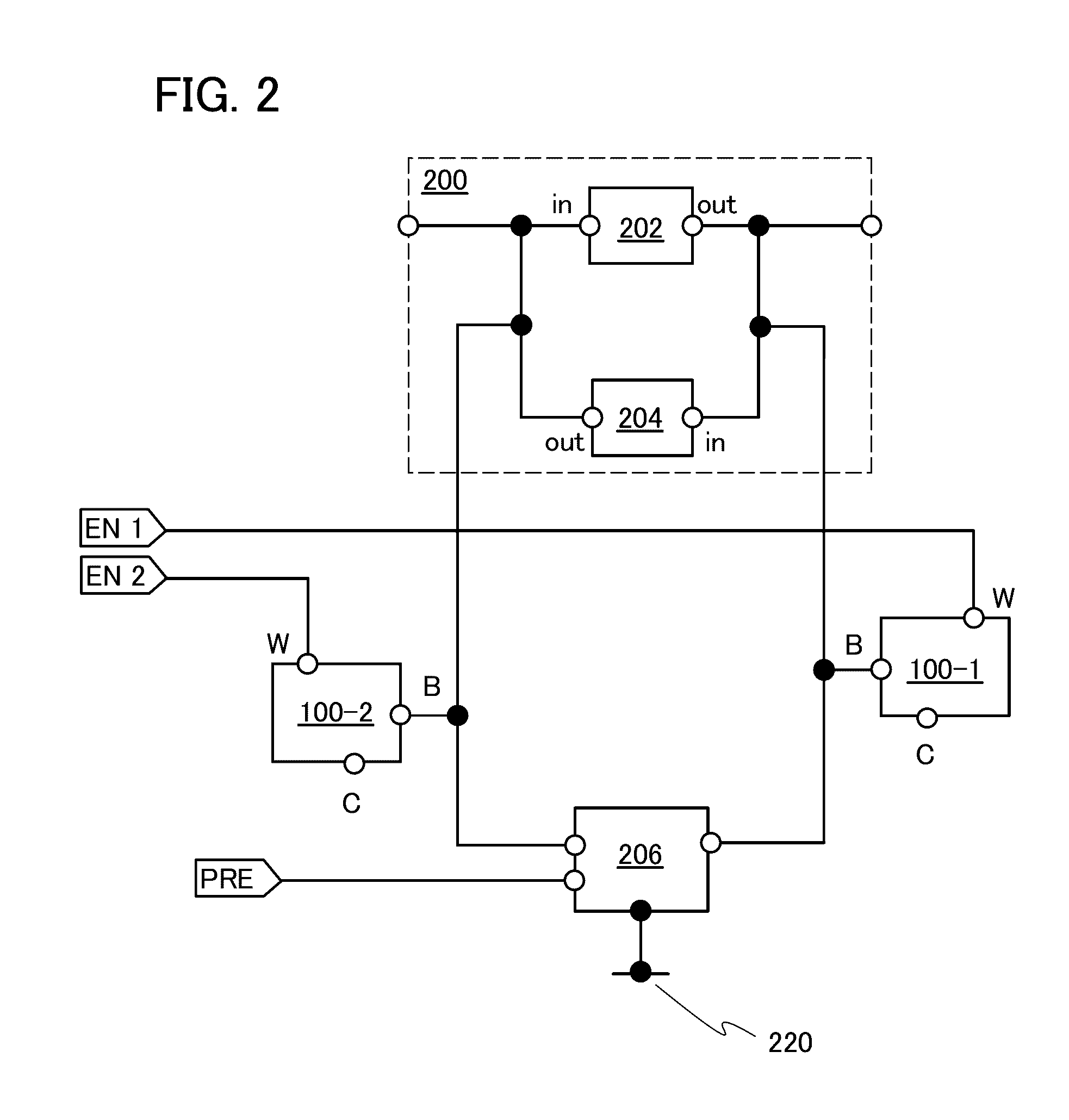Signal processing circuit
a signal processing circuit and circuit technology, applied in the field of signal processing circuits, can solve the problems of limited number of rewriting times, intensive deterioration of memory circuits, writing errors, etc., and achieve the effect of increasing the size of the circuit in the signal processing circui
- Summary
- Abstract
- Description
- Claims
- Application Information
AI Technical Summary
Benefits of technology
Problems solved by technology
Method used
Image
Examples
embodiment 1
[0083]In this embodiment, an example of a signal processing circuit and an example of a method of driving the signal processing circuit will be described with reference to FIGS. 1A and 1B, FIG. 2, FIG. 3, FIG. 4, FIGS. 5A and 5B, FIGS. 6A and 6B, and FIGS. 7A and 7B.
[0084]Note that the signal processing circuit includes large scale integrated circuits (LSIs) such as a CPU, a microprocessor, an image processing circuit, a digital signal processor (DSP), and a field programmable gate array (FPGA) in its category.
[0085]An example of a structure of a signal processing circuit will be described with reference to FIG. 1A. FIG. 1A is a block diagram schematically illustrating a structure of a signal processing circuit.
[0086]A signal processing circuit 120 includes a decoder circuit 122, a control circuit 124, an arithmetic circuit 126 (also referred to as an arithmetic logic unit (ALU)), a register 128, a memory 130, and a power supply circuit 132.
[0087]The decoder circuit 122 decodes a co...
embodiment 2
[0212]In Embodiment 1, an example of a structure applicable to the control circuit 124, the arithmetic circuit 126, and the register 128 which are included in the signal processing circuit is described with reference to FIG. 2 and the like.
[0213]In this embodiment, an example of a structure applicable to the control circuit 124, the arithmetic circuit 126, and the register 128, which is different from the above structure, will be described with reference to FIG. 8. Note that the control circuit 124, the arithmetic circuit 126, and the register 128 are also collectively referred to as a control portion. Here, at least one of the control circuit 124, the arithmetic circuit 126, and the register 128 includes a volatile memory circuit and plural pairs of non-volatile memory circuits corresponding to the volatile memory circuit.
[0214]FIG. 8 illustrates an example in which one volatile memory circuit 200 that can store a 1-bit data signal is provided with a plurality of non-volatile memor...
embodiment 3
[0273]In Embodiments 1 and 2, examples of a structure applicable to the control circuit 124, the arithmetic circuit 126, and the register 128 which are included in the signal processing circuit are described with reference to FIG. 2, FIG. 8, and the like.
[0274]In this embodiment, a structure in which a volatile memory circuit is also used as a latch circuit of a flip-flop circuit will be described with reference to FIG. 9.
[0275]FIG. 9 illustrates an inverter circuit 902 and an inverter circuit 904 which form a volatile memory circuit. These inverter circuits correspond to the arithmetic circuit 202 and the arithmetic circuit 204 described in Embodiment 1 with reference to FIG. 2.
[0276]A DRAM circuit can be formed using the volatile memory circuit (the inverter circuit 902 and the inverter circuit 904) and the pair of non-volatile memory circuits (the non-volatile memory circuit 100-1 and the non-volatile memory circuit 100-2). Note that the number of pairs of non-volatile memory cir...
PUM
 Login to View More
Login to View More Abstract
Description
Claims
Application Information
 Login to View More
Login to View More - R&D
- Intellectual Property
- Life Sciences
- Materials
- Tech Scout
- Unparalleled Data Quality
- Higher Quality Content
- 60% Fewer Hallucinations
Browse by: Latest US Patents, China's latest patents, Technical Efficacy Thesaurus, Application Domain, Technology Topic, Popular Technical Reports.
© 2025 PatSnap. All rights reserved.Legal|Privacy policy|Modern Slavery Act Transparency Statement|Sitemap|About US| Contact US: help@patsnap.com



